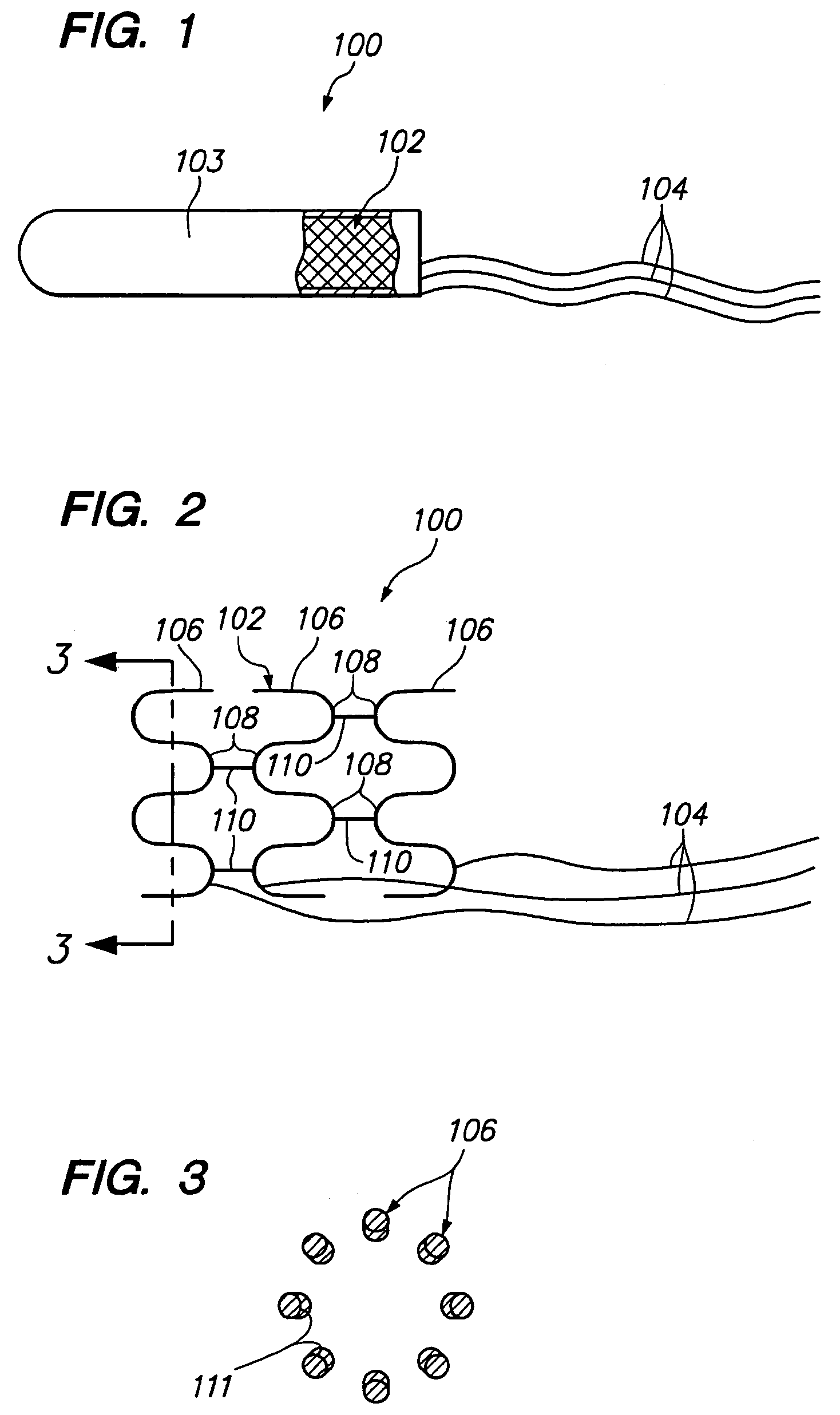Intravascular self-anchoring electrode body with arcuate springs, spring loops, or arms
a self-anchoring, electrode body technology, applied in the direction of internal electrodes, transvascular endocardial electrodes, therapy, etc., can solve the problems of poor sub-threshold stimulation of the target area, affecting system efficiency, and stimulation of a non-targeted region of the brain, so as to minimize the occlusion of blood flow, facilitate the implantation of medical devices, and efficient transmission
- Summary
- Abstract
- Description
- Claims
- Application Information
AI Technical Summary
Benefits of technology
Problems solved by technology
Method used
Image
Examples
Embodiment Construction
[0055]Referring now to FIGS. 1–3, an intravascular medical device 100 constructed in accordance with a preferred embodiment of the present inventions will be described. The medical device 100 comprises an expandable / collapsible tubular electrode body 102, and a plurality of flexible conductive leads 104 electrically coupled to the electrode body 102. For the tubular body can either be continuous tubular structure or a structure that has a tubular profile, such as a coil. The electrode body 102 can be transformed from a collapsed geometry (FIG. 1) into an expanded geometry (FIG. 2). In its collapsed geometry, the medical device 100 can be intravascularly delivered to a target site within a vessel using a standard stent delivery apparatus. In order to maintain the medical device 100 in its collapsed geometry, a removable sheath or covering 103 is disposed over the collapsed electrode body 102. The sheath 103 may have one or more delivery wires (not shown) that can be pulled in order t...
PUM
 Login to View More
Login to View More Abstract
Description
Claims
Application Information
 Login to View More
Login to View More - R&D
- Intellectual Property
- Life Sciences
- Materials
- Tech Scout
- Unparalleled Data Quality
- Higher Quality Content
- 60% Fewer Hallucinations
Browse by: Latest US Patents, China's latest patents, Technical Efficacy Thesaurus, Application Domain, Technology Topic, Popular Technical Reports.
© 2025 PatSnap. All rights reserved.Legal|Privacy policy|Modern Slavery Act Transparency Statement|Sitemap|About US| Contact US: help@patsnap.com



